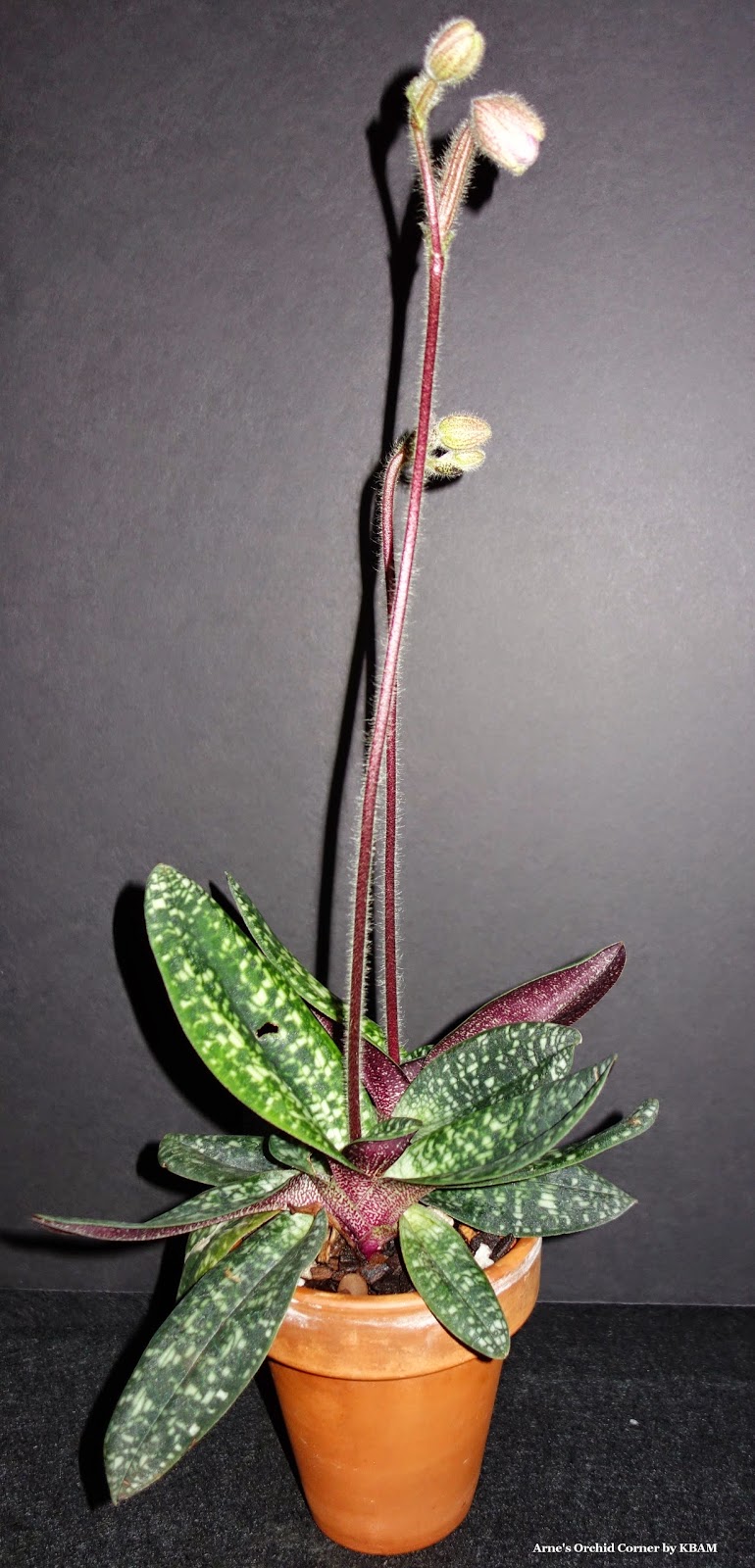 |
Leptotes bicolor 'Khairul Bariah' CCM/AOS
|
Today we were awarded the Certificate of Cultural Merit (CCM) by the American Orchid Society (AOS) for our Leptotes bicolor. The clonal name is 'Khairul Bariah', (which is me...again!). I am so happy Arne took my suggestion to take it for judging. So the official name of this clone is, Leptotes bicolor 'Khairul Bariah' CCM/AOS.
I truly felt this orchid is worth an evaluation. It is 15 years old and with his hard work and care, it has thrived. The plan to keep the orchid in the basement to prevent the flowers from wilting worked very well (see my last post from March 29th). Today there are still 56 flowers on nine influorescence.
In case you are wondering what are the criteria for getting a CCM, according to the AOS, "CCM is awarded to the exhibitor of a well-flowered specimen plant of robust health. The plant must score more between 80 to 89 points inclusive on a 100 point scale".






















